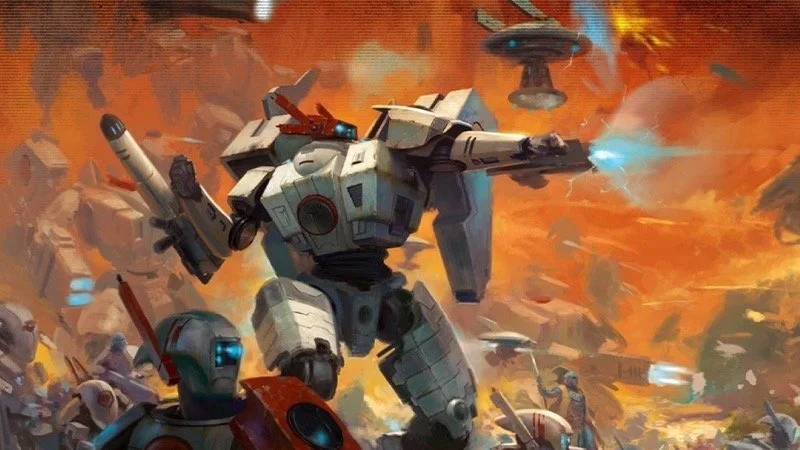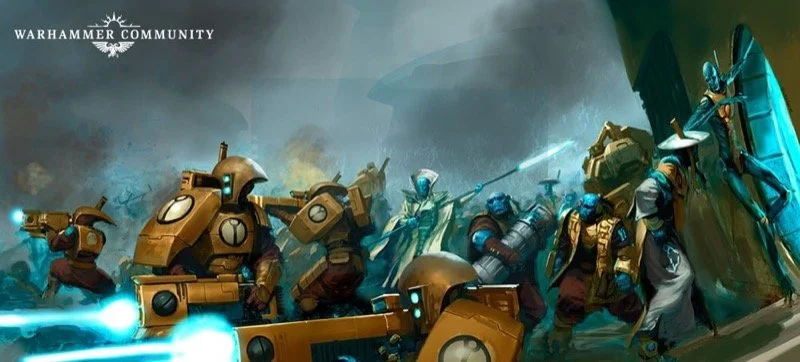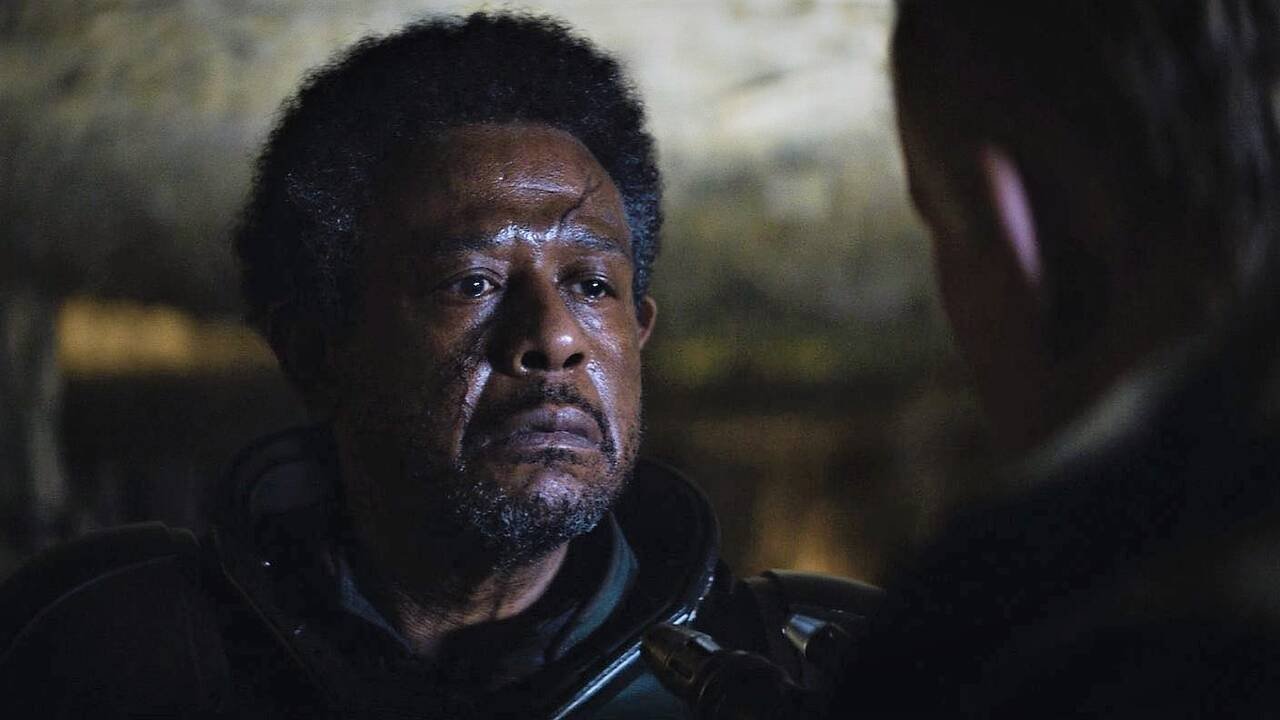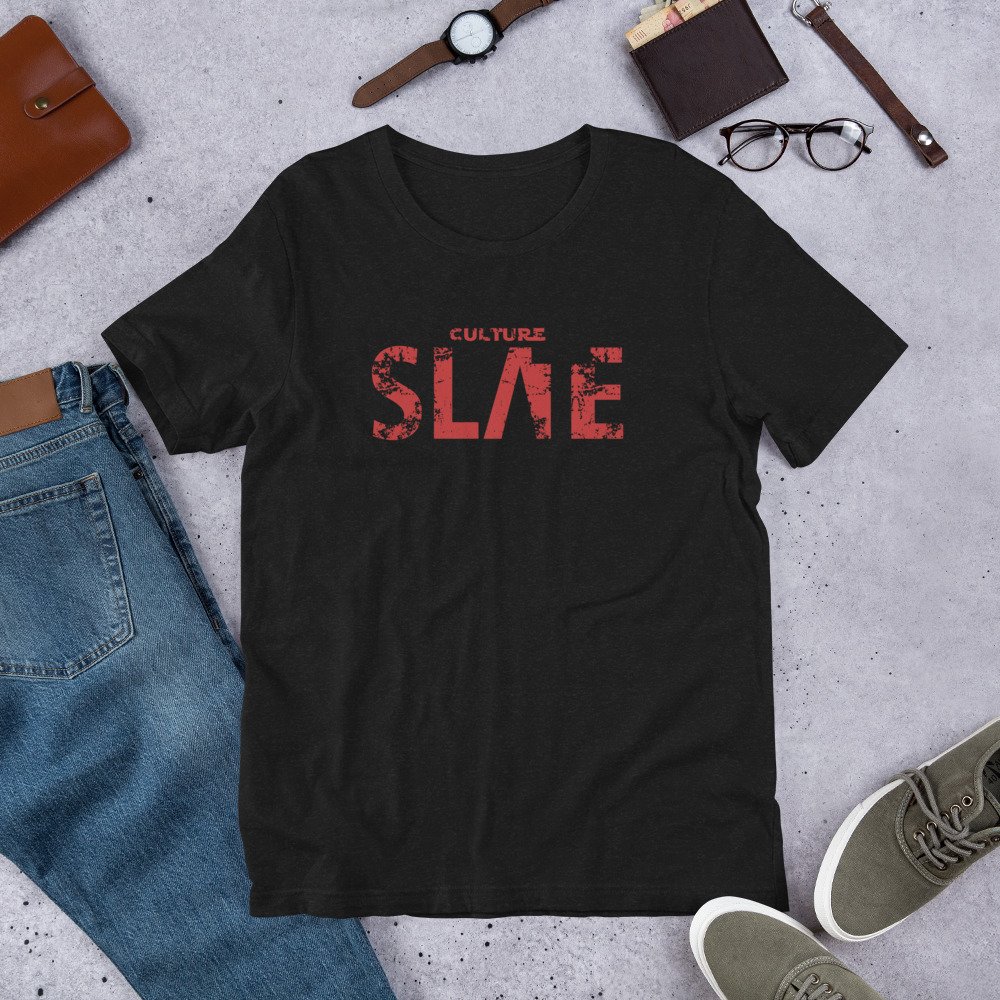Book Review: 'Warhammer 40K: Elemental Council'
Image Source: Amazon
Elemental Council is markedly different from the previous two Warhammer novels CulureSlate has reviewed in recent months. The novel’s plot revolves around the formation of an Elemental Council of T’au caste society, each member from one of the five distinct groups that make up the whole of the T’au Empire. This Council has been gathered for an important reason but eventually comes to pursue a wider goal of seeking to save a struggling expansion of the T’au Empire onto a world dominated by humans once part of the Imperium of Man.
A note on character names before we begin: We used the audiobook of the novel as the basis for our review. Like many recently released Warhammer stories, little information on character names or spellings exists in wider promotional or fanbase material, meaning this review tries its best to spell their name properly. There is every likelihood some are incorrect, but with that caveat out of the way, let’s get into it!
WARNING: This novel contains LIGHT spoilers for Elemental Council.
RELATED:
Image Source: Warhammer-Community.com
The T’au are a species of blue-skinned hooved bipeds who escaped purging by the Imperium of Man thanks to the chaotic nature of the galaxy. In the time since the Imperium originally noticed them, the emergence of the leading fifth caste, the Ethereals, has prompted monumental expansion of the T’au. They have made considerable technological advancements, and possess a dense, populous, and thriving small empire on the periphery of the Imperium, made up of diverse alien species who follow the tenets of the Greater Good. This demands unity under the T’au as the best path forward for the galaxy, though there is a sinister side to it. Individual identity is limited in many lower-level members of caste society, and the caste system itself is incredibly rigid. For example, an engineer picking up a pistol to defend themselves may fall under intense scrutiny for doing the work of a warrior, with dishonor, failure, and disobedience seeing a range of terrible punishments from manipulation of the mind to ritual suicide as the proper responses.
It is into this environment readers are dropped, the intricacies of T’au life already fully underway as conflict engulfs a human-held moon which still resists the T’au’s expansion over the nearby world of Cao Quo. We meet each of our main characters in turn and quickly understand the stresses, burdens, and responsibilities of their lives. Kay is a member of the Earth Caste, an engineer with a disgraced teacher who has also dragged her down by association despite her paternal love for him and his flawed methods. Brilliant and driven, she still struggles with self-confidence and the novel sees her pushing through such problems to aid the summoned Council.
Image Source: Warhammer-Community.com
Then there is Swordlight, a secretly cloned propaganda soldier of the Fire Caste often kept away from the fighting by Water Caste handlers. The Empire claims she has survived fight after fight against impossible odds, but the cloning process has begun to deteriorate her body, wracking her with health problems. She drives herself forward to prove herself worthy of the honors bestowed onto the original Swordlight and her predecessors, though this also makes her uniquely hotheaded.
Next is Or’es, a centuries-old Water Caste spy, ambassador, and infiltrator. Periodically placed into storage and reawakened to find the Empire continuously expanded, his conscience weighs heavily on him. He has betrayed hundreds of people, many of them human, in the T’au expansion across the galaxy. His latest mission, on Cao Quo itself, has seen him remain, though the calamitous setbacks in the world’s conquest see his experience called on for the Council.
Image Source: YouTube
Then, there is Say, an Air Caste pilot, who is perhaps one of the more removed characters from the plot. Due to the nature of the Air Caste, he remains quite literally remote, disconnected from everyone else through staying aboard the ship, though he later plays a critical role in the story that tackles his particular narrative head on. Finally, we have the enigmatic Ethereal, Yor’i, who assembles the Council. He receives little POV from his perspective, and we instead get the interpretation of his character from the others around him, showing how the Ethereals are revered by T’au society. His detachment from everyone is for completely different reasons to Say, but much like him, there is a noted portion of the story where his role is critical.
The story’s villain, meanwhile, is written in an intriguing way. Artamax, a Primaris Marine of the Raptors Chapter of Space Marines, has infiltrated T’au operations with considerable success. Working alongside human resistance fighters who lurk across the world, he is playing a unique long game that only reveals itself at the 11th hour. Cold and calculating, he represents the other half of Space Marines we so rarely see in prominent media, where they aren’t so much heroes as they are living weapons.
But, we can’t call this novel perfect. There are some issues, such as certain clashes between characters that appear dragged out when practicality’s sake should have seen them handled much sooner. There are also certain plot details that, unless you are well versed in Warhammer lore, will come out nowhere without prior establishment in the story resulting in something of a deus ex machina. The remaining further issues dive into spoiler territory too much but we want to make sure review readers realize we do recommend this novel!
Be it for general Warhammer fans who might enjoy exploring something outside their usual wheelhouse, T’au fans who are looking for a deep examination of their favorite faction, or newcomers who are okay with diving head first and just going with the flow, Elemental Council is one big dose of T’au politics, culture, society and struggles wrapped into a story of rebellion and personal challenges.
Rating: 8/10
READ NEXT:

















